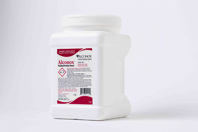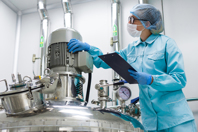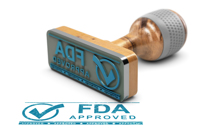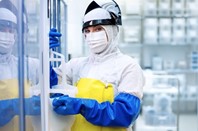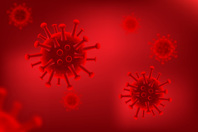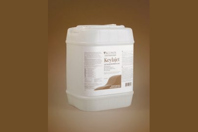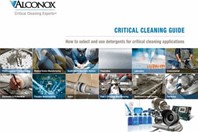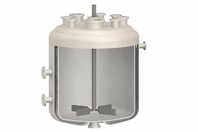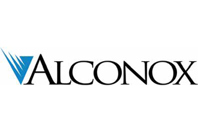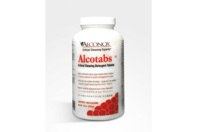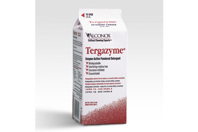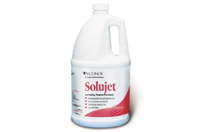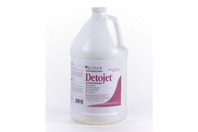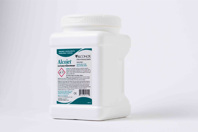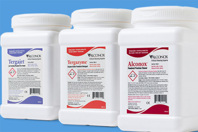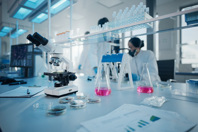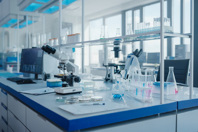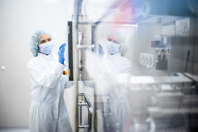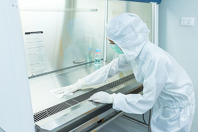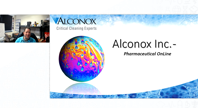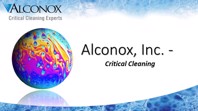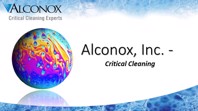
About Alconox Inc.
With more than 75 years of experience in formulation of quality aqueous detergents, Alconox Inc. understands the cleaning needs of the pharmaceutical industry, including stringent FDA regulations and GMP compliance. Pharmaceutical processing scientists and engineers need safe, effective, and easy to validate cleaners for manual, machine wash, and clean-in-place applications for removing difficult to clean residues like titanium dioxide, petrolatum, and tablet coating residues.
Alconox Inc. Products
Alconox Inc. has a range of 15 products, which vary from high emulsifying to low foaming and powder to liquid. Alconox aqueous cleaners are ideal for a variety of cleaning applications including ultrasonic, clean in place, machine, and parts washer.
The experts at Alconox formulate all cleaners to be biodegradable, readily disposable, and free rinsing to leave no interfering residues.
Sizes range from single gallon and four-pound boxes to drums, ideal for scaling from the research and development stage to large-scale manufacturing.
All cleaner brands are GMP compliant and have lot specific COA, technical bulletins, and safety data sheets.
Alconox Inc. brands are manufactured in the United States and are sold through leading distributors in the laboratory, healthcare, and industrial fields in more than 50 countries.
AQUEOUS CLEANING PRODUCTS
-
Concentrated, anionic detergent for manual and ultrasonic cleaning. Free rinsing to give you reliable results without interfering residues. Ideal for cleaning contaminants from glassware, metals, plastics, ceramic, porcelain, rubber and fiberglass. Excellent replacement for corrosive acids and hazardous solvents. USDA authorized. Dilute 1:100. pH 9.5
-
How can I clean residual hormone residue from our process lines and tanks?
-
All Alconox Inc. detergents are Class I Medical Devices and listed as FDA-registered detergents. The list of the detergents is found on the FDA website with FDA Registration number 2410887. Alconox Inc. is also proud to be ISO9001:2015 and ISO13485:2016 Certified.
-
If you are looking to manually clean coveralls, bunny suits, bouffants, and the like, the Alconox detergent you have in house will be great. In a more ideal circumstance, we would go with what is essentially Alconox powder enhanced with protein enzymes. This truly gives thorough removal/cleaning of biological, proteinaceous, viral, and microbial residue. This is Tergazyme® Enzyme-Active Powdered Detergent – see our Tergazyme detergent video. Both detergents, the Alconox and Tergazyme powder, do not contain traditional “laundry” detergent attributes: florescent whitening agents, softeners and fragrances. They both contain excellent dispersants, emulsifiers and wetting agents that can enhance cleaning significantly. So they won’t “smell” clean, they just will be clean. In fact, critically clean.
-
Per Center for Disease Control (CDC) guidelines for cleaning and disinfecting viruses and other pathogens, any form of disinfection necessarily follows cleaning. The process of cleaning will remove any residues that might shield any virus or pathogen from the disinfection step that comes next. Disinfection, following thorough cleaning and rinsing, can be done with bleach solutions, 70% alcohol solutions, or other products with EPA-approved emerging viral pathogens claims. As outlined by CDC, bleach solutions should reside on surface for at least one minute and can be made as follows:
- 5 tablespoons (1/3rd cup) bleach per gallon of water, or
- 4 teaspoons bleach per quart of water
An excellent cleaning and wiping solution can be made with 0.5% (0.75- 1.5 oz/gal or 5 mL/L) Alconox® Powdered Precision Cleaner or Liquinox® Critical Cleaning Liquid Detergent, depending on preference for powder or liquid concentrate, respectively. Following which, per the CDC guidelines, wipe with the above bleach solution or other disinfectant solution. Allow wiped-down surfaces to sit for several minutes before rinsing to complete the disinfection.
-
Keylajet is a low-foaming high alkaline liquid designed for hard to clean soils, grit, grime, slime, grease, buffing compounds, oils, particulates, deposits, chemical and solvents, mold releases, metal oxides, and more.
-
Pharmaceutical and Biotechnology processing equipment can be made residue-free clean with Alconox Critical Cleaning Detergents. Alconox, Inc. detergents are available worldwide with consistent formulations, certificates of analysis, ingredient toxicity data, shelf life information, residue sampling techniques, ingredients disclosure, analytic methods, lot number tracking, and validation support.
-
Solujet cleaner is the detergent to consider for your next new pharmaceutical cleaning project. Unlike a leading CIP cleaner, Solujet has high wetting surfactants that enhance emulsifying, wetting, dispersing and rinsing. The surfactants allow faster, more efficient cleaning and easier rinsing.
-
Alconox cosmetic cleaners make short work of silicon, titanium dioxide, and other hard-to-clean residues.
-
From spinner flasks to production fermentation tanks, Alconox detergents can eliminate cross-contamination and assure reliably clean equipment for all of your biotechnology cleaning needs. Even difficult accumulated biomaterial residues on fermentation vessel agitation shafts, thermowells, harvest tubes, sparger tubes, and the bevel tips of addition ports easily come clean with Alconox detergents.
-
Effective sterilization requires effective cleaning - and when it comes to cleaning reusable instruments and equipment, Alconox detergents meet the most demanding healthcare and hospital cleaning criteria.
-
Alconox lab detergents leave no interfering residues on laboratory equipment. Since 1946, Alconox, Inc. has provided quality laboratory glassware cleaner, residue-free cleaners to meet the demanding needs of laboratory professionals.
-
Medical device cleaning by definition requires critical cleaning for use in demanding human health and veterinary applications.
-
Alconox, Inc. has a range of 12 products, which vary from high emulsifying to low foaming and powder to liquid. Alconox aqueous cleaners are ideal for a variety of cleaning applications including ultrasonic, clean in place, machine, and parts washer.
-
Alconox, Inc. can assist you in selecting an appropriate cleaner for cleaning pharmaceutical manufacturing equipment and utensils to prevent malfunctions or contamination that would alter the safety, identity, strength, quality or purity of the drug product beyond the official or other established requirements.
-
Alconox, Inc. provides a range of validation information to help support the company's brands.
-
Effervescent detergent tablet for lab pipette cleaning. Maximum cleaning in syphon pipette washers to clean pipettes and tubes. Slow release bubble action and free rinsing produce reliable results and no interfering residues. USDA authorized. pH 6.5
-
Tergazyme is a concentrated, anionic detergent with protease enzyme for manual and ultrasonic cleaning. Excellent for removal of proteinaceous soils, tissue, blood and body fluids from glassware, metals, plastic, ceramic, porcelain, rubber and fiberglass with no interfering residues. Ideal as a cleaning agent in Reverse Osmosis and Ultra-Filtration Systems. USDA authorized. Dilute: 1:100. pH 9.5
-
Concentrated to save you money. Phosphate-free, biodegradable, and readily disposable. Low foaming heavy duty detergent for high performance results. Free rinsing to give you reliable results and no interfering residues. Ideal for under-counter and floor standing lab washing machines.
-
Concentrated to save money. Phosphate-free, biodegradable, and readily disposable. Low-foaming, high-wetting detergent for maximum performance. Free rinsing to give users reliable results and no interfering residues. Ideal for clean-in-place (CIP) cleaning and floor-standing lab washing machines.
-
Concentrated to save money, this detergent replaces corrosive acids and hazardous solvents. It’s phosphate-free, biodegradable, readily disposable, and free-rinsing to give reliable results and no interfering residues.
-
Detergent 8 is concentrated to save you money, biodegradable, and readily disposable. Its penetrating wetting power saves you time. It’s free rinsing to give you reliable results and no interfering residues.
-
Low foaming acid cleaner and rinse for high performance results from your cleaning machinery. Use to pass your cleaning validation tests for lab accreditation and plant inspection approval.
-
Low foaming for use in mechanical and spray washers. Neutral pH for non-corrosive cleaning, safe handling, and easy waste disposal. No chelation or alkalinity waste treatment problems. Concentrated for economical use. Free rinsing to eliminate interfering residues. Biodegradable and phosphate free.
-
Concentrated to save money. Phosphate free, biodegradable and readily disposable. Penetrating wetting power to save time. Free rinsing to give reliable results and no interfering residues.
-
Alconox ultrasonic cleaning products clean large batches of articles and provide fast, effective, penetrating, and convenient cleaning.
-
With typical use for pipe, tank, and filtration systems, Alconox offers a range of products to assure clean systems without disassembly.
-
Use Alconox manual cleaning products for cleaning small articles such as medical examination instruments, labware, or circuit boards, and large articles such as process equipment.
-
Detojet is a low-foaming, heavy-duty alkaline detergent for use in labware washers, parts washers, power-spray systems, and ultrasonic cleaning systems. The concentrated, highly emulsifying, and penetrating formula is free rinsing and leaves no interfering residues. Protects interior working parts of washers. USDA authorized. Dilute 1:200. pH 12.4
-
Alcojet – Low Foaming Powdered Detergent: Nonionic, low foaming powder cleaner for use in labware washers, parts washers, power-spray systems, manual and ultrasonic cleaning. Corrosion inhibited formula recommended for glassware, metals, plastic, ceramic, porcelain, rubber and fiberglass. Free rinsing for reliable results and no interfering residues. USDA authorized. Dilute 1:200. pH 11.5.
CONTACT INFORMATION
Alconox Inc.
30 Glenn St., Suite 309
White Plains, NY 10603
UNITED STATES
Phone: 914-948-4040
Fax: 914-948-4088
Contact: Jeff Phillips
EDUCATIONAL ARTICLES AND RESOURCES
-
Gain insight into the most recent upgrades to Alconox's powder detergent packaging and the company's focus on continuous improvement from the Vice President of Strategy, Michael Moussourakis.
-
Learn about an effective cleaning solution that removes DNA from laboratory equipment and materials without the need for bleach.
-
It is important to have clean laboratory equipment, as any “leftover” proteins could contaminate your next experiment. Learn about three of the best methods for cleaning proteins, RNA, and DNA.
-
Cleanliness can be detected to varying degrees or levels. Learn about methods of detecting and measuring cleanliness in relation to soil quantities.
-
Explore aqueous detergent selection criteria as it fits into three broad categories: function and efficacy, health and safety, and environmental.
BROCHURES, CATALOGS AND DATASHEETS
- A Guide To Cleaning RNA Contamination
- Alconox: Powdered Precision Cleaner
- Tergajet: Low-Foaming Powdered Detergent
- Detergent 8: Low-Foaming Ion-Free Detergent
- Detojet: Low-Foaming Liquid Detergent
- Alconox Product Catalog And Detergent Selection Guide
- Alconox Industrial Detergent Catalog
- Alcotabs: Critical-Cleaning Detergent Tablets
WEBINARS
-
Learn how thorough cleaning and process optimization in pharma manufacturing prevent cross-contamination, ensure product integrity, and enhance efficiency while also improving compliance and reducing costs.
-
Process optimization is key to achieving effective pharmaceutical and cosmetic critical cleaning. Learn how manufacturers can improve cleaning efficiency and ensure product safety.
-
Explore general cleaning concepts, important sanitary surface considerations, cleaning guidelines for cannabis manufacturers, medical device re-processing and cleaning applications, and more.
-
In this on-demand webinar we’ll look at detergent selection and chemistry, the Important Sanitary Surface Considerations for COVID-19, Cleaning Guidelines for Cannabis Manufacturers, Overcoming Difficult Residues in Consumer Products and Cosmetics, and even more.

